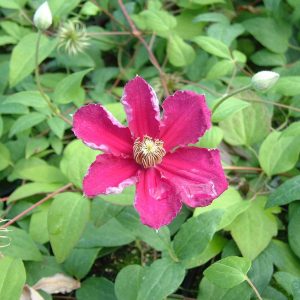Description
Doronicum orientale ‘Little Leo’ is a charming and compact perennial that is native to parts of Europe and Asia. This plant is a member of the aster family, and is often grown for its bright yellow, daisy-like flowers that appear in early to mid-spring. The flowers are borne on slender stems that rise above the foliage, and are a popular choice for attracting bees and other pollinators to the garden. ‘Doronicum orientale ‘Little Leo” is a relatively low-maintenance plant that prefers well-draining soil and partial shade to full sun. It is ideal for borders and cottage gardens, and can also be grown in containers. Overall, Doronicum orientale ‘Little Leo’ is a beautiful and hardy addition to any UK garden. Its cheerful yellow flowers, low-maintenance requirements, and traditional medicinal uses make it a much-loved and popular choice among gardeners of all levels of experience.
Key Facts
- Common Name(s):Leopard’s Bane ‘Little Leo’
- Hardiness:Fully hardy through most of the UK
- How big will I get? Doronicum orientale ‘Little Leo’ can grow to a height of 0.3m and a spread of 0.5m.
- Did You Know That:Doronicum orientale is commonly known as leopard’s bane, due to its poisonous nature
Plant Calendar
A rough guide to how this plant will change through the year.
| Jan | Feb | Mar | Apr | May | June | July | Aug | Sept | Oct | Nov | Dec | |
| Flowering Time |  |
 |
||||||||||
| Foliage Colour |  |
 |
 |
 |
 |
 |
 |
 |
 |
| J | F | M | A | M | J | J | A | S | O | N | D |
 |
 |
||||||||||
 |
 |
 |
 |
 |
 |
 |
 |
 |
Care Guide

Soil Requirements
Doronicum orientale ‘Little Leo’ prefers moist but well-draining soil. This plant is not tolerant of alkaline soil, it requires either a neutral or acidic soil to grow.

Best Position
Doronicum orientale ‘Little Leo’ prefers a sheltered position and likes the sun but not too much of it, so an area that is partially shaded is perfect.

Maintenance
Doronicum orientale ‘Little Leo’ should be deadheaded regularly to promote new flowers coming through. This will prolong the flowering period of the plant as it saves the energy that the plant would have put into producing seeds and allows it to produce more flowers!

Pest, Diseases and Wildlife
Doronicum orientale ‘Little Leo’ is generally pest free, it can be vulnerable to certain diseases such as leaf spot. It is also known to attract bees, and other pollinators. It is considered to be toxic.





